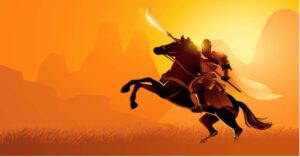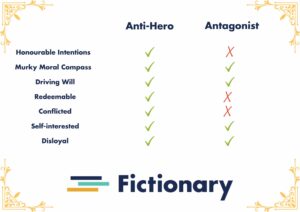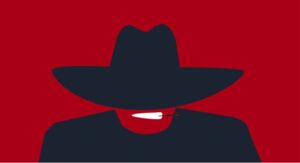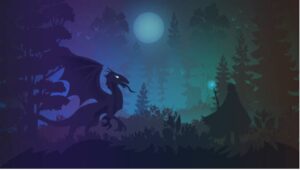
Creating believable characters (and a believable anti-hero) requires much diligence by the writer.
Listing questions to define traits of a character are common in writing courses and craft books focused on character development. These questions are meant to inspire the writer to provide depth to their characters through backstory, motivations, internal and external goals.
Unsurprisingly, the most believable characters tend to be those who have relatable flaws, because just like the imagined beings on the page, the reader is rarely perfect.
For this reason, the anti-hero is a popular character type in both film and fiction.

What Is an Anti Hero?
Differentiating an anti-hero from an antagonist is important if the writer wants the reader to cheer for their flawed hero.
Unlike an antagonist who is traditionally thought of as “the bad guy”, the one who acts to prevent the protagonist or hero of the story from reaching their goals, the anti-hero is the one who acts with good intentions, albeit with a flawed moral compass.
Actor Bryan Cranston perfected the form of the anti-hero in both his infamous character Walter White from Breaking Bad and his more recent character of Judge Michael Desiato in the Showtime series Your Honor.
Both characters make decisions lacking morality and legality in attempts to protect their family.
Actor Kevin Costner also shows a strong anti-hero in his portrayal of John Dutton in the Paramount series, Yellowstone.
Dutton looks like a traditional hero whose driving goal is to protect his family’s legacy, until audience members discover what going to the “train station” means. Dutton proves he will use any means necessary, including murder, to protect what he believes is most important to his family and ranch.
What Is an Antagonist?

While these characters can be mistaken for the other’s role, the anti-hero reveals qualities that make most readers cheer for them at some point in the story.
The antagonist, however, reveals very few if any, reasons to root for their success at any point in the story.
How to Write an Anti Hero
As illustrated above, the redeemable quality of the anti-hero is where appeal for this type of character lies.
Most readers feel their own flaws, no matter how consciously or unconsciously.
In reading a character who can be conflicted at times, we find a relatable figure. We also find compassion if we choose to root for our anti-hero and that compassion is a less sung reason to be engaged in a story.
The anti-hero must have an edge or quality that is in direct contrast with the qualities of a traditional hero.
If traditional characters are:
- Honest
- Loyal, and;
- Kind
Writers might begin with writing their anti-hero as being:
- Deceitful,
- Treacherous, and;
- Wicked.
Once the writer decides the traits of the anti-hero, they can begin to form the story around that the character arc of a traditional hero.
Writing a character with these nontraditional hero traits allows the writer to create interesting and unlikely heroes, however these heroes can also be used in a metaphoric way to represent the flaws of a society or human nature in general.
When forming these characters to represent a wider world view, the writer must have a deep understanding of how the character will change over the course of the novel.

Anti Hero Examples From Literature
Whether your reading tastes fit in the contemporary or classic, the anti-hero has been disrupting the traditional view of a hero for generations. Consider some of the examples of anti-heroes below:
Ebenezer Scrooge in A Christmas Carol by Charles Dickens
While Scrooge spends most of the novel indulging his greedy nature, he is shown to be a hero at the end of the story when he makes choices that serve and give to others.
Severus Snape in The Harry Potter Series by J.K. Rowling
Snape appears to be “the bad guy” for most of the Harry Potter books, but readers discover his motivations and actions throughout the series stem from his endless love for Harry’s mother.
Tyler Durden in Fight Club by Chuck Palahniuk
Tyler Durden spends the duration of Palahniuk’s novel encouraging Jack to find his freedom and true nature through methods that at first seem likely to destroy the Jack.
Gollum in The Lord of the Rings by J.R.R. Tolkien
Gollum fights his own greed, and while he is mostly dishonest and disloyal, the loyal servant that resides inside him surfaces at times to reveal his true nature.
Rachel in The Girl on the Train by Paula Hawkins
Rachel spends most of the novel trying to hide her alcoholism by lying throughout the story, but her intentions are honorable in wanting to find the truth of a murder and her motivations stemming from trauma in her past make her a sympathetic character in the end.

Anti Heroes in Movies
We love an anti hero in a movie as much as we love them in books. Here are 10 more anti hero examples from film.
Wolverine in the X-Men series
Wolverine is a gruff mutant with a dark past, often torn between his animal instincts and his desire to protect the innocent. He is a reluctant hero with a penchant for violence.
Captain Hook from Peter Pan
Captain Hook is a pirate captain obsessed with seeking revenge on Peter Pan who cut off his hand and fed it to a crocodile. Despite his villainous nature, his theatricality and charm make him a classic anti-hero as he schemes to capture the elusive Peter Pan.
Jack Sparrow in the Pirates of the Caribbean series
Captain Jack Sparrow is a charming and cunning pirate whose moral compass is as unpredictable as his actions. He regularly finds himself on the wrong side of the law while pursuing his own interests.
Scar from The Lion King
Scar is the uncle of Simba who orchestrates the murder of Mufasa to seize power over the pride lands. Despite his villainous actions, Scar’s charisma and complexity make him a compelling anti-hero as he struggles with his own insecurities and desires for power.
Gru from Despicable Me
Gru is a super villain-turned-anti hero who adopts three orphaned girls and discovers the joys of fatherhood. He transforms from a villainous mastermind to a lovable dad with a side of villain.
Frankenstein’s Monster in Frankenstein
Frankenstein’s Monster is a tragic figure rejected by society, torn between his desire for acceptance and his monstrous nature. He’s often portrayed sympathetically despite his violent tendencies.
Maleficent from Maleficent
Maleficent is the dark fairy who curses Princess Aurora out of jealousy to fall into a deep sleep on her sixteenth birthday. While traditionally portrayed as a villain, the 2014 film provides a more sympathetic portrayal of her character, blurring the lines between hero and villain.
Loki in Thor and The Avengers series
Loki is a complex anti hero who oscillates between loyalty and betrayal, struggling with issues of identity and sibling rivalry as he seeks power and validation in the realm of Asgard.
Shrek from the Shrek series
Shrek is an ogre who prefers solitude but finds love and friendship with a princess and other fairy tale characters. He has a gruff exterior and antisocial tendencies, but underneath he is capable of love ad loyalty for his ragtag crew.
Cruella de Vil from Cruella
Cruella de Vil is the fashion-obsessed heiress who plots to steal a litter of dalmatian puppies for their fur. Despite often being portrayed as a straight villain, the 2021 film provides a more nuanced portrayal of her character, showcasing her journey and what drives her.
How to Find Examples of Anti Heroes
There are three characteristics that are found in every anti hero. You can use these to assess any character in books or films to see if they are an anti hero or a villain.
- Complex motivations: Although an anti hero may do “bad” things, they often have complex and understandable motivations for their actions.
- Moral ambiguity: Anti heroes often have a mix of traits that would be found in traditional villains and some that would be found in heroes, too.
- Redeemable qualities: Every anti hero has at least one redeemable quality. This may look like love for their family, remorse for their action, a desire to help others, or compassion for someone in need.
Conclusion
The anti-hero in literature does not always show traits we want to cheer for in the beginning of a story. But readers can find a loveable, if not sympathetic character, in the anti-heroes we write.

